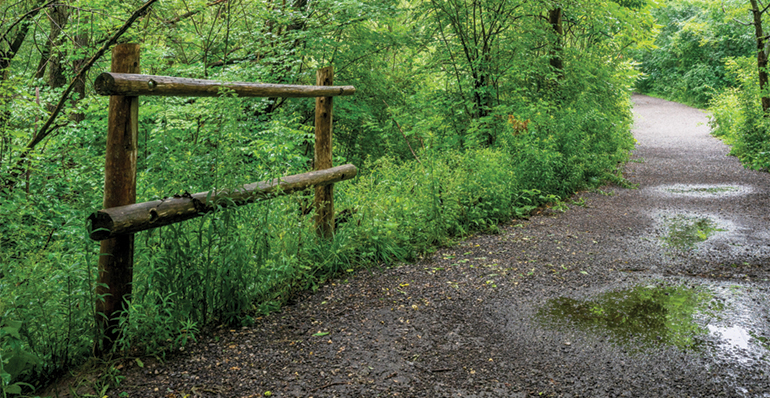Nature calling: London’s environmentally significant areas

You may have heard London referred to as the Forest City, and there’s a good reason for that. There are 21 areas in the city that are considered to be Environmentally Significant Areas or ESAs. These areas exist both within the city and in more rural corners, ranging from wetlands, to forests to valleys. With so much natural beauty to discover, we’re narrowing down the very best that the city has to offer. Happy exploring!
Sifton Bog
Located in West London, Sifton Bog is well known, but maybe not the most visited ESA in the city. Home to 2.8km of trails, accessible just off of Oxford Street West past Hyde Park Road, the bog has been capturing the imaginations of local naturalists since its “discovery” in the 1870s. However, archaeological remnants have found that the bog was used by Indigenous peoples in the area long before that, likely for gathering food, medicine, and as a hunting ground. A quick ride on the 17 bus will take you across Oxford Street where you can find access to the trails behind the local Remark Fresh Market.
“In terms of wildlife, more than 43 species of fish have been discovered in Medway Valley, and bird species like Mallard ducks and Belted Kingfishers are common year-round.”
Westminster Pond/Pond Mills
Located off Commissioners Road East near Victoria Hospital, this area holds 11km of managed trails, and covers nearly 200 hectares of land. It is the largest publicly owned ESA in London. The five ponds that inhabit the land, known as the Kettle Ponds, were formed nearly 13,000 years ago, after large blocks of ice were left behind by the retreating glaciers. Several migrating birds pass through the area, and in the summer you can find birds such as Great Crested Flycatcher and Wood Thrush. A straight ride south on the 4 bus from downtown will lead you to a stop just south of Commissioners Road East, where you will find an access point to the trails.
Medway Valley
A north London treasure, Medway Valley features swamps and forest valleys, all accompanied by the winding Medway Creek. Home to 10.9km of trails that follow the creek all the way from Windermere Road to Sunningdale Road, Medway Valley makes for an exciting challenge for the most experienced hiker. Complete with rolling hills and steep climbs, a walk on through this area is great for those looking to take in the natural sights, while also getting a solid workout. In terms of wildlife, more than 43 species of fish have been discovered in Medway Valley, and bird species like Mallard ducks and Belted Kingfishers are common year-round. The area is most easily accessible from Western University, where a short walk from University Hospital to the end of Windermere Road will take you directly to an access point.
The CovesThe Coves is located around what used to be an oxbow of the Thames River. Over time, it has turned into three separate ponds, and is a home to marshes, ravines, woodlands and meadows. The Coves main access point can be found off of Wharncliffe Road South, where you will find 5km of gently sloping terrain. The land has been used for many purposes throughout the years, from a shooting range to a paint factory, to an apple orchard. Today, the Coves is protected by groups like Friends of the Coves Watershed Inc., which has helped develop boardwalk trails and ecological restoration to the area. A 15 minute ride on the 5 bus from downtown London will lead you to the area surrounding the Coves, where they can be accessed both off of Wharncliffe Road South or Springbank Drive.
Hopefully this list is enough to get you started on your adventures throughout the Forest City. With so many ESAs to discover within the city, and even more to be found in the surrounding area, you’re sure to always have a great trail to visit and new natural sights to take in.

